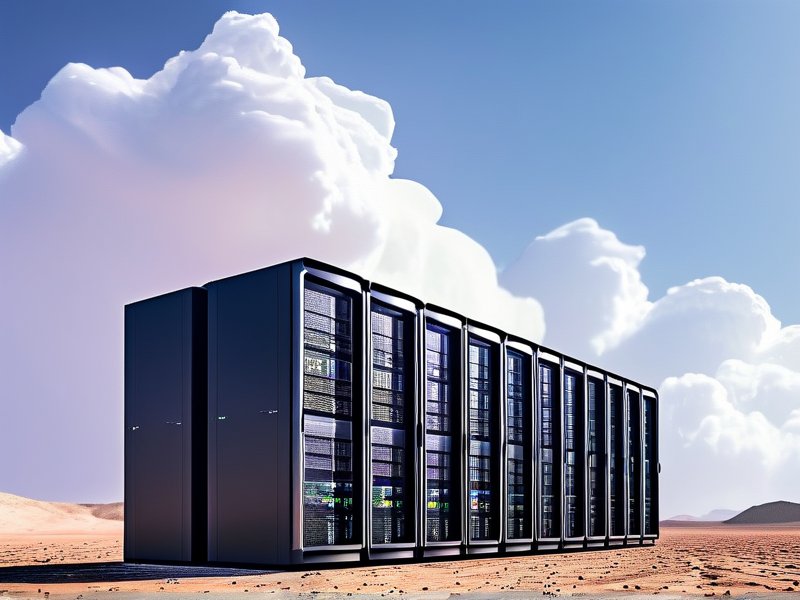
Introduction: The Evolution of Cloud Infrastructure
In an era where digital services demand near-instant responsiveness and uninterrupted uptime, traditional cloud architectures are being outpaced by next-gen innovations. Modern businesses and developers now require server environments that combine raw power with agile scalability. This is where next-gen cloud infrastructure shines—offering transformative advancements in performance, efficiency, and reliability. At its core lies next-gen VPS hosting, a cornerstone of this evolution. Platforms like Edgenode's VPS Hosting exemplify how cutting-edge infrastructure can redefine server capabilities.
Core Technologies Driving Next-Gen Performance
The leap forward in cloud infrastructure is fueled by three primary technological advancements:
- Edge Computing Integration: By decentralizing processing power closer to end-users, edge nodes reduce latency by up to 90%. For example, real-time gaming platforms using edge-optimized VPS instances experience sub-20ms response times.
- AI-Powered Resource Orchestration: Machine learning algorithms dynamically allocate CPU, RAM, and storage resources. A content delivery network (CDN) provider using this technology reported 40% lower server costs while handling peak traffic spikes.
- Hardware-Software Convergence: Custom-built servers with NVMe storage and third-gen AMD EPYC processors deliver 35% better compute density. This allows VPS environments to handle intensive tasks like AI training or video rendering without performance degradation.
These technologies aren't isolated advancements—they form an integrated ecosystem. Consider a SaaS company running on a next-gen VPS platform: their application's database queries are processed on edge nodes, caching layers are managed by AI, and computations leverage GPU-optimized instances. The result? A 6x improvement in transaction throughput compared to legacy cloud setups.
Key Features of Leading Next-Gen VPS Solutions
When evaluating next-gen VPS hosting providers, focus on these critical capabilities:
- Containerization at Scale: Platforms like Edgenode offer Kubernetes-native environments with automatic pod scaling. Developers can deploy microservices architectures that auto-expand during traffic surges while maintaining strict latency SLAs.
- Granular Resource Control: Users gain hypervisor-level customization. For instance, a cryptocurrency mining operation might configure their VPS with dedicated CPU cores and priority bandwidth allocation to maximize hash rates.
- Hybrid Cloud Flexibility: The ability to seamlessly integrate with on-premises infrastructure. A healthcare provider could maintain patient records locally while using cloud VPS instances for EHR application processing.
These features translate to measurable benefits. Take an e-commerce client using next-gen VPS hosting: their checkout page load times dropped from 2.8 seconds to 0.8 seconds, leading to a 34% increase in conversion rates. The platform's auto-healing infrastructure also reduced outage duration from hours to minutes during a DDoS attack.
Implementing Next-Gen Infrastructure Best Practices
Maximizing the potential of next-gen cloud infrastructure requires strategic implementation:
- Start with Workload Profiling: Use performance monitoring tools to identify bottlenecks. A media streaming service discovered that 70% of their CPU usage occurred during video transcoding. They then allocated dedicated transcoding VPS instances, reducing costs by 25%.
- Leverage Serverless Complementarity: Pair VPS hosting with serverless functions for event-driven tasks. An IoT platform uses VPS instances for steady-state operations while deploying serverless functions to handle sensor data bursts.
- Adopt Proactive Security: Look for providers offering integrated WAF, DDoS mitigation, and immutable infrastructure. A fintech app using such a setup reduced security incident response time from 45 minutes to 90 seconds.
Regularly conduct performance audits using synthetic monitoring tools. A SaaS startup that scheduled weekly load tests on their VPS environment identified a configuration error causing 15% performance leakage. The fix required only a kernel parameter adjustment.
Conclusion: The Future of Server Performance
Next-gen cloud infrastructure isn't just an upgrade—it's a paradigm shift. By combining edge computing, AI-driven resource management, and advanced hardware-software integration, modern VPS hosting solutions like those from Edgenode are setting new benchmarks for what's possible. As businesses face growing demands for speed, scalability, and security, investing in this next generation of cloud infrastructure becomes essential.
For developers and IT decision-makers, the path forward involves:
- Prioritizing platforms with transparent resource allocation
- Embracing hybrid deployment models
- Implementing continuous performance optimization
The cloud landscape is evolving rapidly, but those who adopt next-gen infrastructure today will gain a decisive edge—delivering faster services, lower costs, and better user experiences in an increasingly competitive digital world.
Explore the full potential of next-gen VPS hosting with Edgenode's comprehensive solutions, designed to power the applications of tomorrow.
